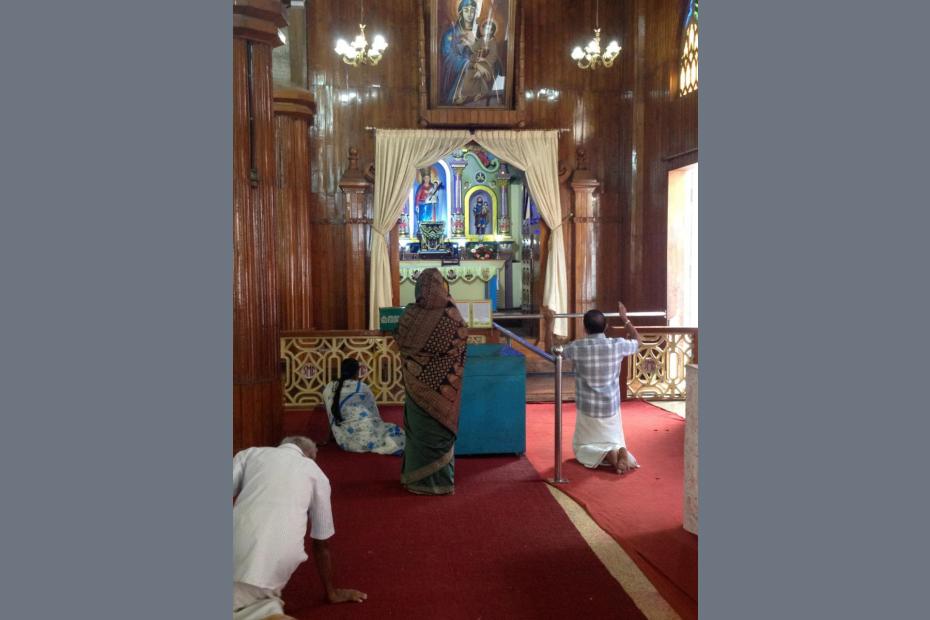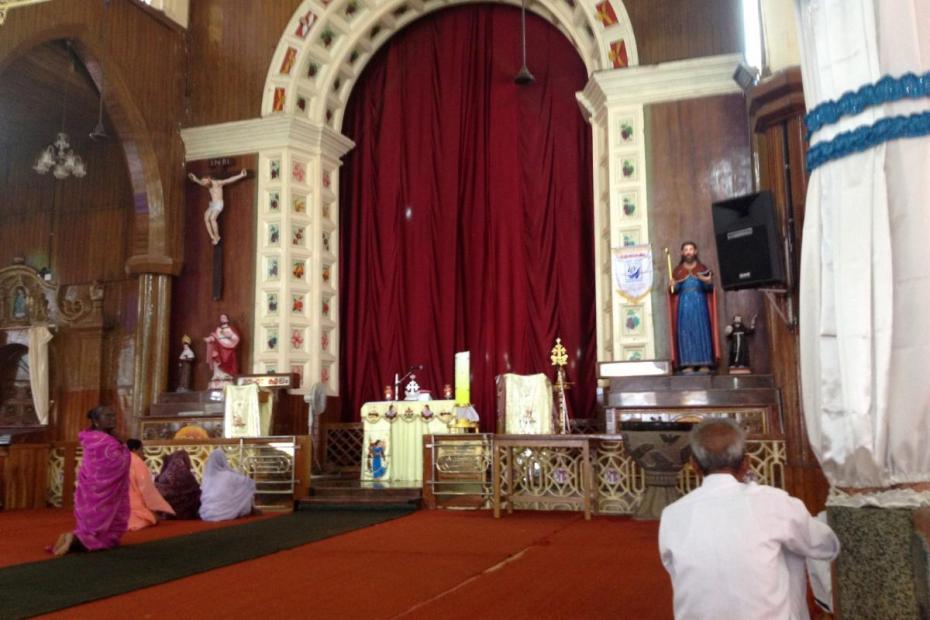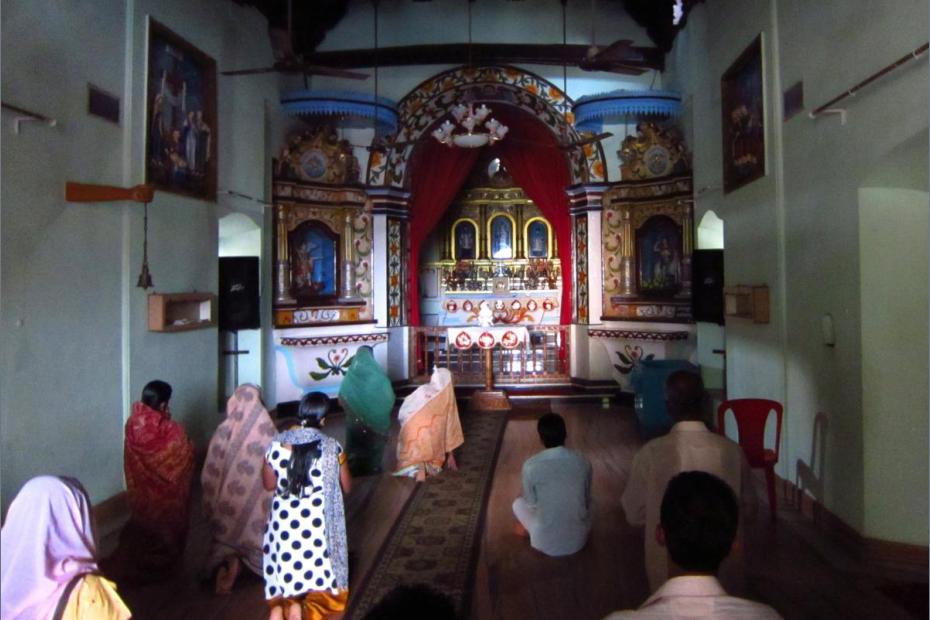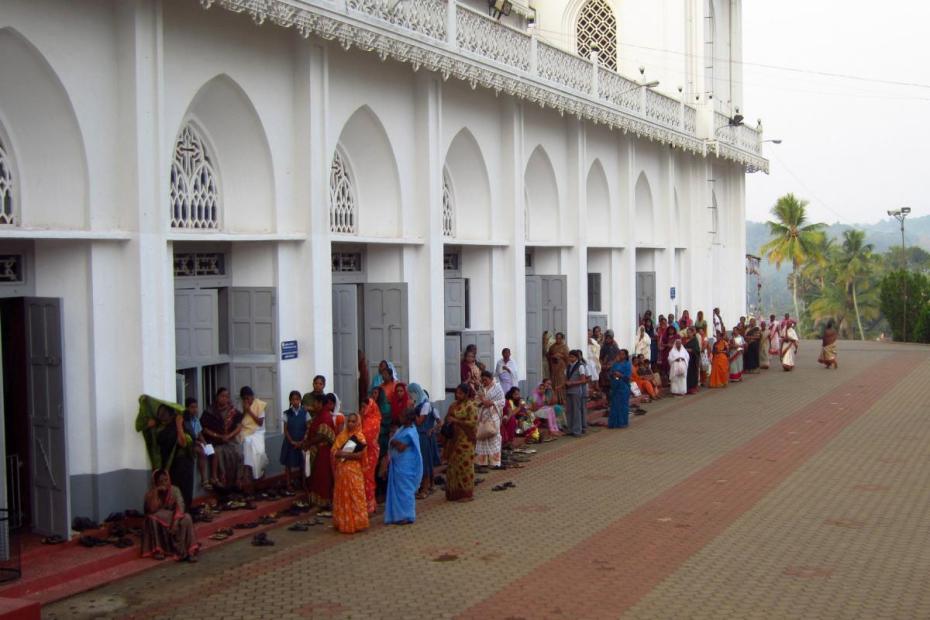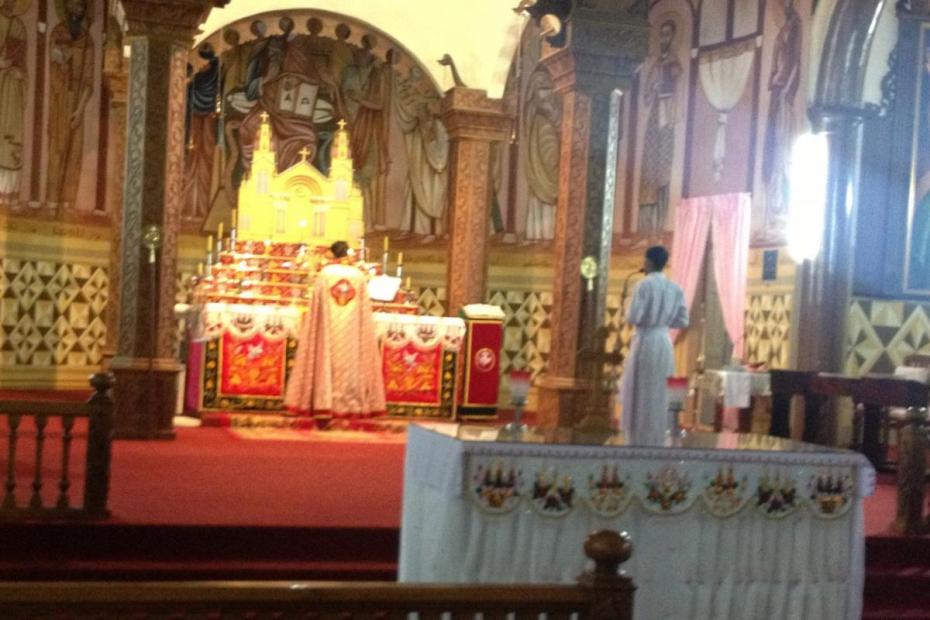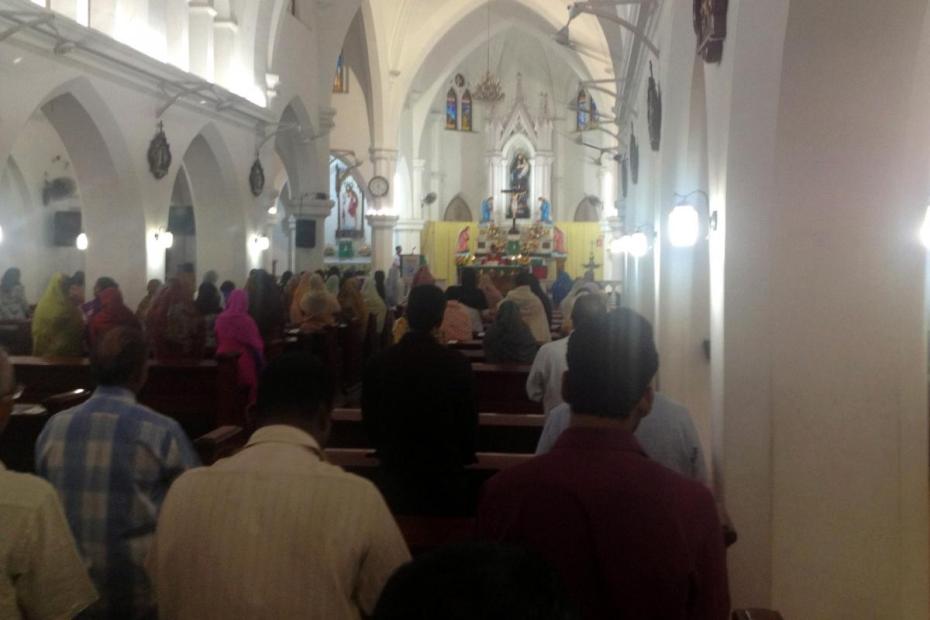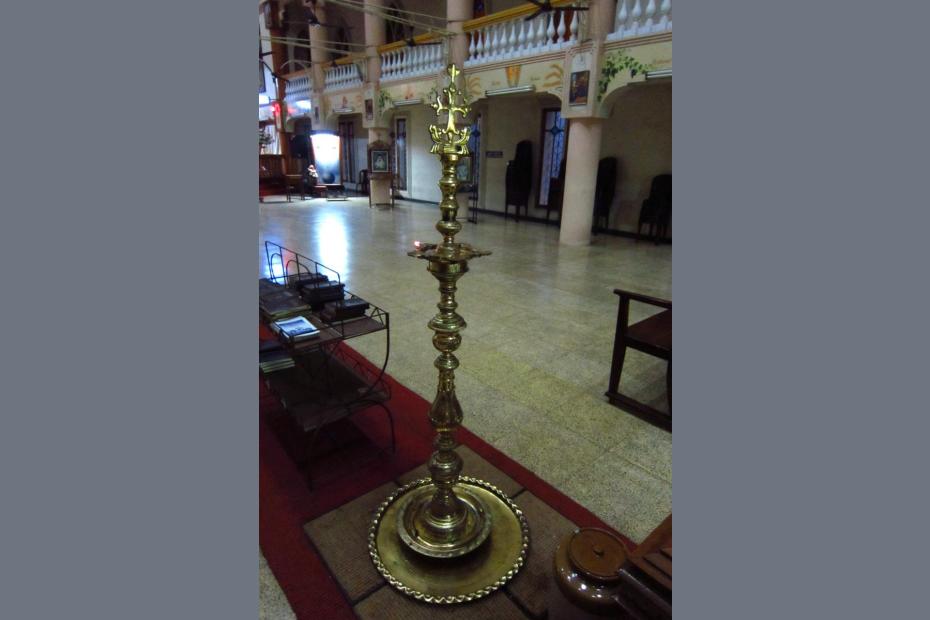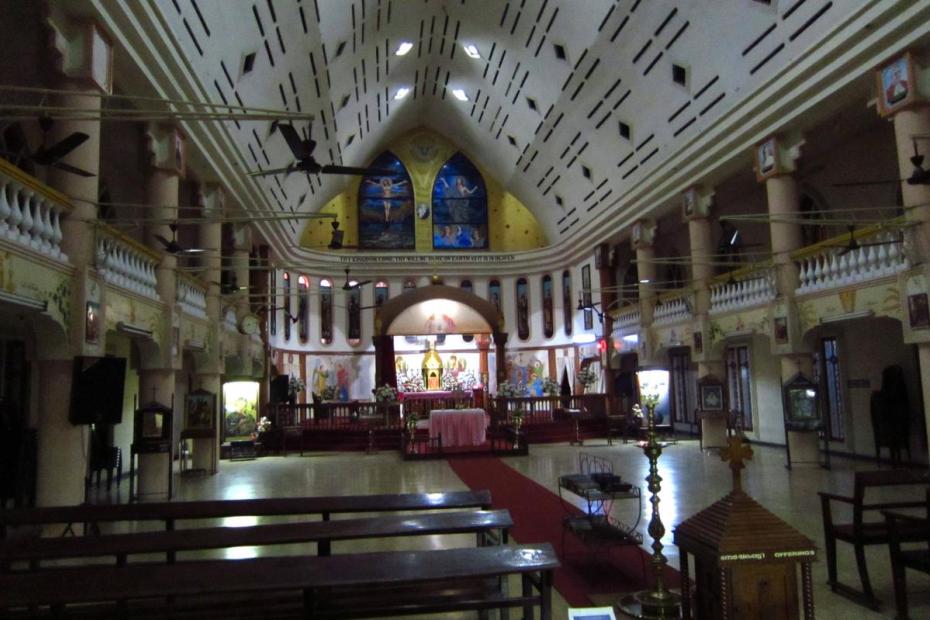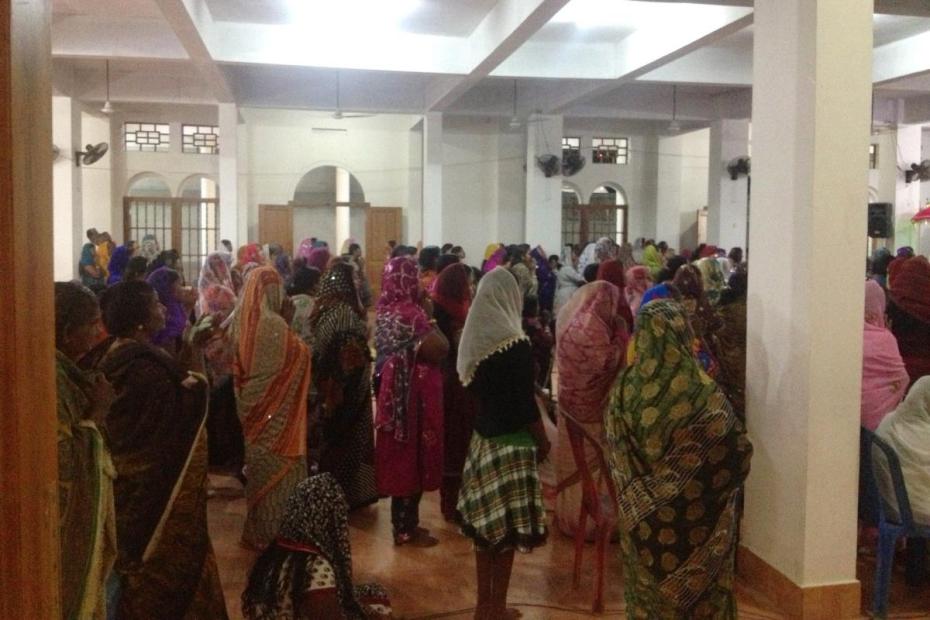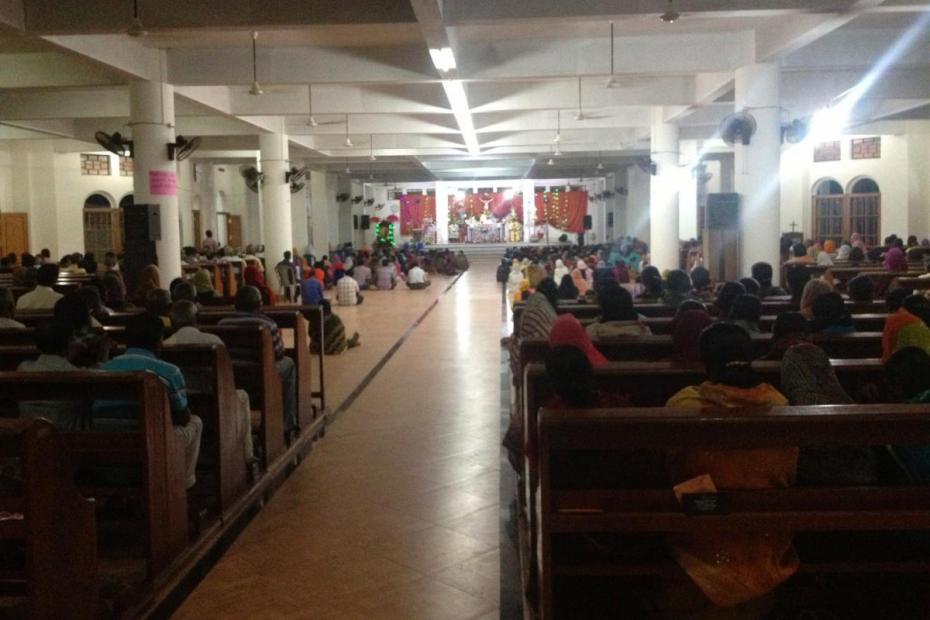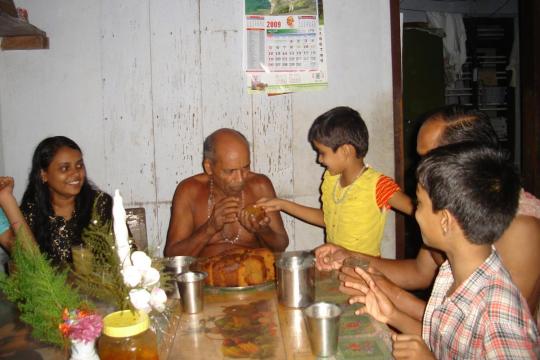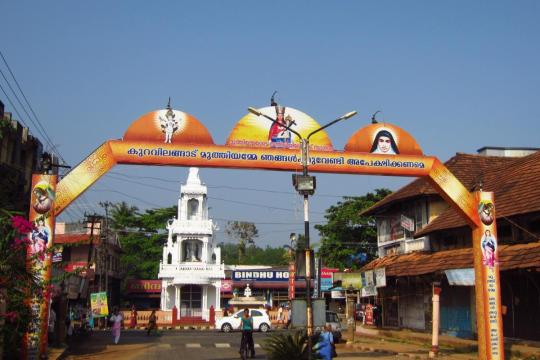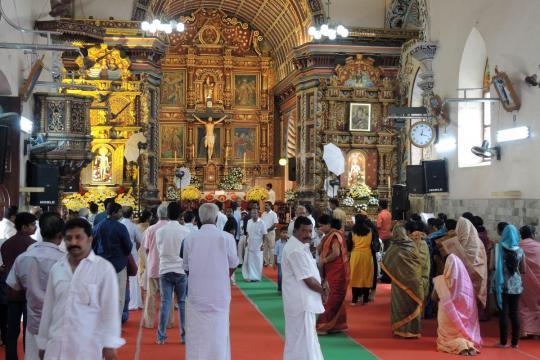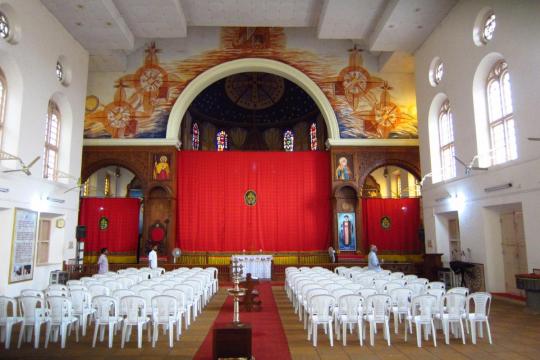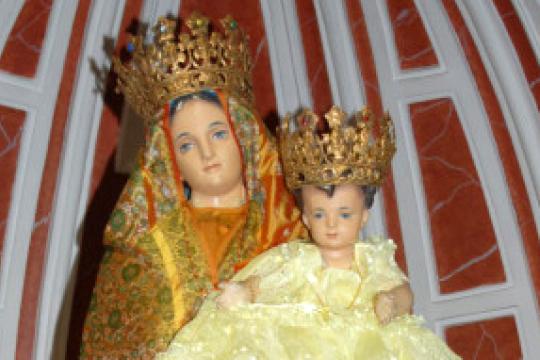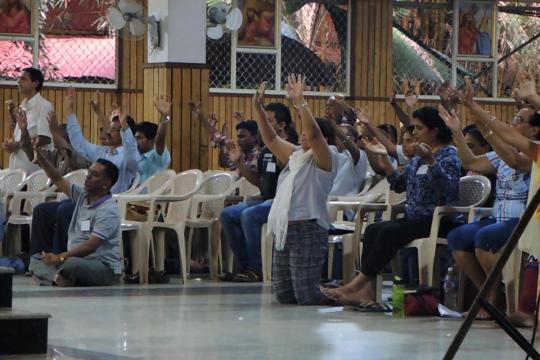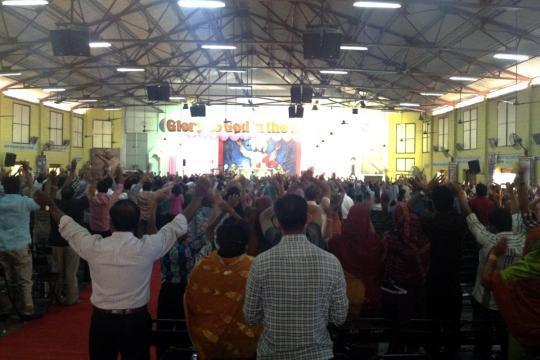India is home to three different kinds of liturgy: the Syrian rite liturgies of the Indian Syro-Malabar and Syro-Malankara churches and the Latin rite liturgy common to most of the church worldwide, which is celebrated in India in a wide variety of local languages.
Charismatic forms of worship have also found a place in India, incorporating Pentecostal, Indian, and traditionalist Western European elements to a bewildering degree.
Dance is integrated into Hindu worship, but rarely into Christian worship, though it sometimes has a place as entertainment at parish feasts. Christmas celebrations often include dancing and celebration, as can Catholic feasts, but unlike a number of Hindu practices, dance does not carry over into Catholic liturgical practice. Communion on the tongue, not in the hand, is the norm, in deference to cultural norms about sanitation and only consuming food with the right hand.
